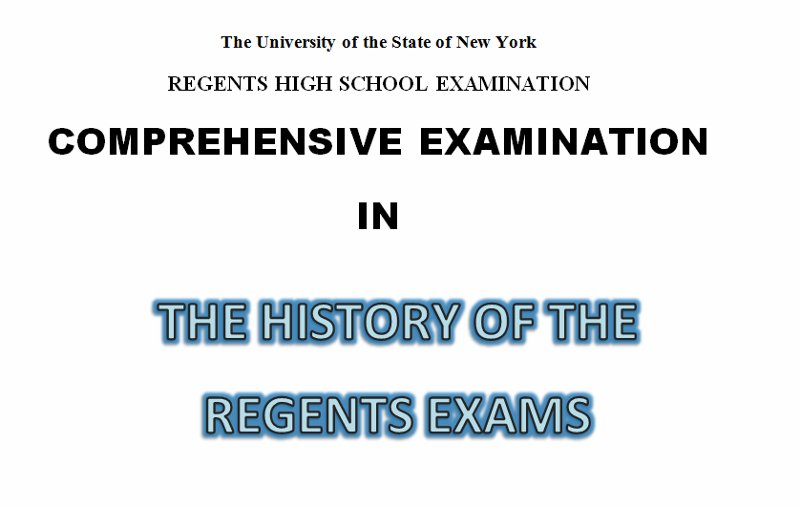How’d Regents Examinations Became Part of Our Curriculum ?
The University of the State of New York created the Regents, a government body of an academic institution, on May 1, 1784. The original Regents were selected to act as a council to Columbia College, located in Manhattan, to overlook education at the college. Soon afterwards, more colleges, and other academic establishments throughout New York State, recognized the need for a legislative directory to be responsible for education in the state. This legislative directory consisted of various state officials whom sought responsibility over the state’s education.
In 1787, Regent Alexander Hamilton presented the New York State Assembly and Regent Ezra L’Hommedieu with legislative bills produced by the Regents’ committees. The bills suggested that each college should have individual councils responsible for their education. In addition, the Regents asked for greater responsibility over New York State education, in order to centralize the educational system. The New York State Assembly and Senate opposed to the idea of the Regents beginning a corporation on the state’s education.
After continuous debates, the New York State Assembly and the Regents Committee agreed on a compromise bill. The Regents were granted larger authority over academic regulation in the state, under the title Board of Regents. Colleges and schools became subject to standardized inquiry of school reports, teachers, and students. In actual practice, the Regents reviewed schools on statistical performance. Another strategic function the Regents gained was the ability to hold and distribute state funds accordingly, based on school performances and needs.
In the early 1800’s, the Regents realized that maintaining high school education was their main priority. High school was the critical point of a student’s education, because it either taught students general knowledge to be ready for life or prepared students for further studies in college. At the time, most students completed high school and found work afterwards. The students who went on to college usually did not meet academic standards.
The Regents developed Regent examinations and course syllabi to standardize education for high schools and other academic institutions throughout the State of New York in the later nineteenth century. The Regents specified that students must learn language, mathematics, and geography as necessary subjects for graduation. In 1877 the Regents responded to colleges’ requests to increase the educational standards of high schools, by administering examinations in crucial subjects upon graduation, which would also be used for student qualification to college. The Regent exams were quickly adopted, because high schools wanted to continue to qualify and receive financial aid from the state and communal branches whose funds were regulated by members of the Board of Regents. Students received certificates and diplomas after scoring exemplary on the Regents exams, which became a standard in 1890. Furthermore, the Regents exams allowed for teachers to work with publicized high school syllabus and curricula in preparing classroom studies.
The educational system was undermined as the country experienced social difficulty throughout portions of the early twentieth century. Throughout the 1910’s the educational standards established a couple of decade prior were still being implemented. The highlight of the Regents examination was observed in 1925 with 68 different subject exams. As the Great Depression began, the educational system experienced unrest along with society and its economy. To some extent the 1930’s resulted in a lost generation as a great portion of the population was unable to attend schools which were tax funded by the state.
After World War II, the educational system recovered alongside the society. The educational curriculum was changed to expand conceptual thinking and improve students’ understanding of the subjects. In 1970, the Regents examinations experienced the greatest change. Most of the exams were discontinued along with the class curricullum. These changes have remained until the present with the exception of the History exam being separated into Global Studies and United States History exams. The rest of the exams continue to be administered to students in January, June, and August. Also, the curriculum are changed every few years to suit the student’s needs accordingly.
Past Regents examinations and more information can be found at
http://www.nysedregents.org/
The most recent change to the Regents exams took place this year. Starting June 2014, the ELA, Algebra I, Geometry, and Algebra II Regents exams will incorporate the Common Core standards implemented since 2010.
Until 2016, high school students will continue to earn a Regents certificate with a minimum score of 65. In 2016, students will be required a 75 minimum for the English exam and 80 minimum for the Algebra exam. The new score requirements are adapted accordingly for college preparation purposes by the Board of Regents.

